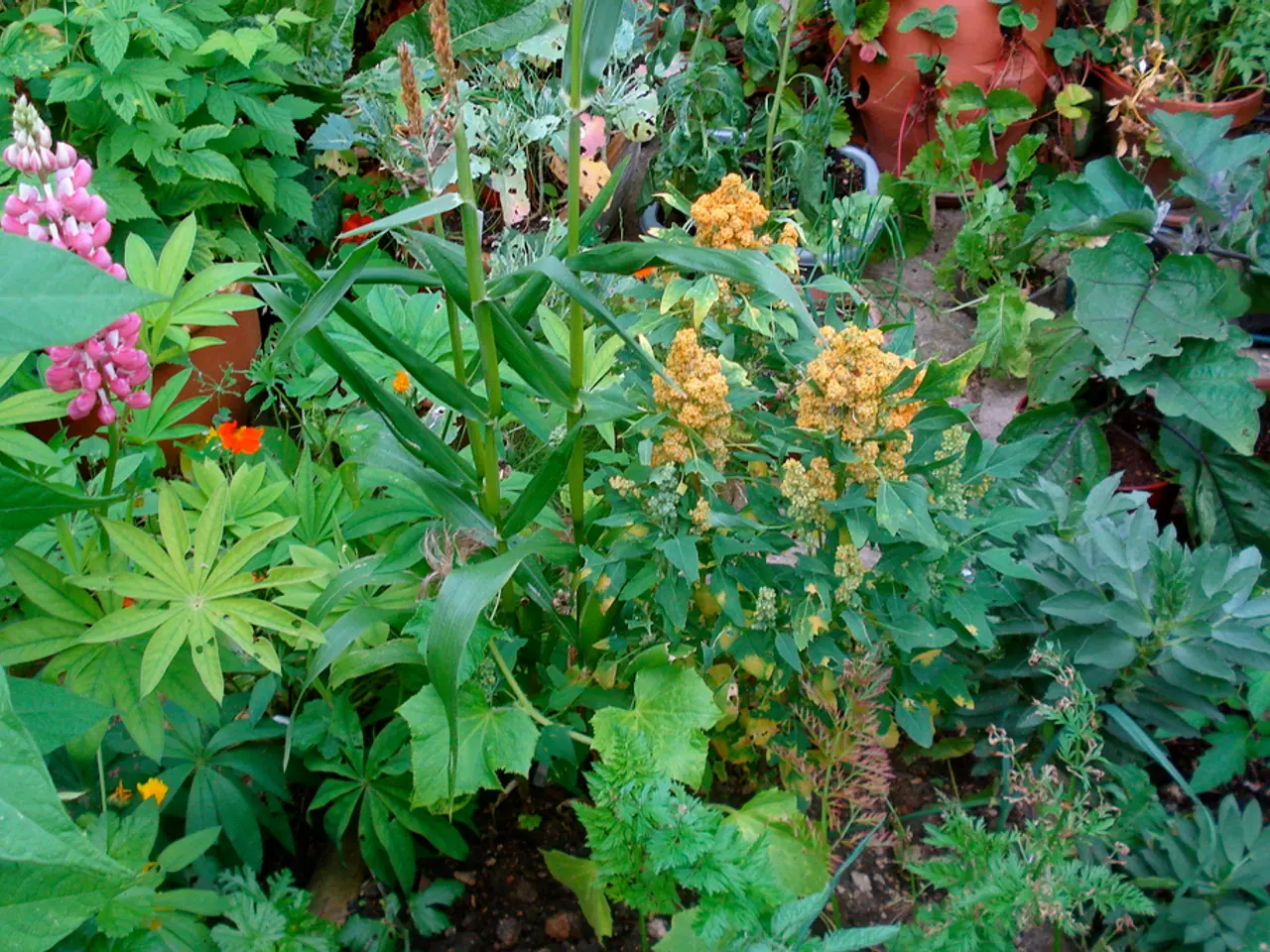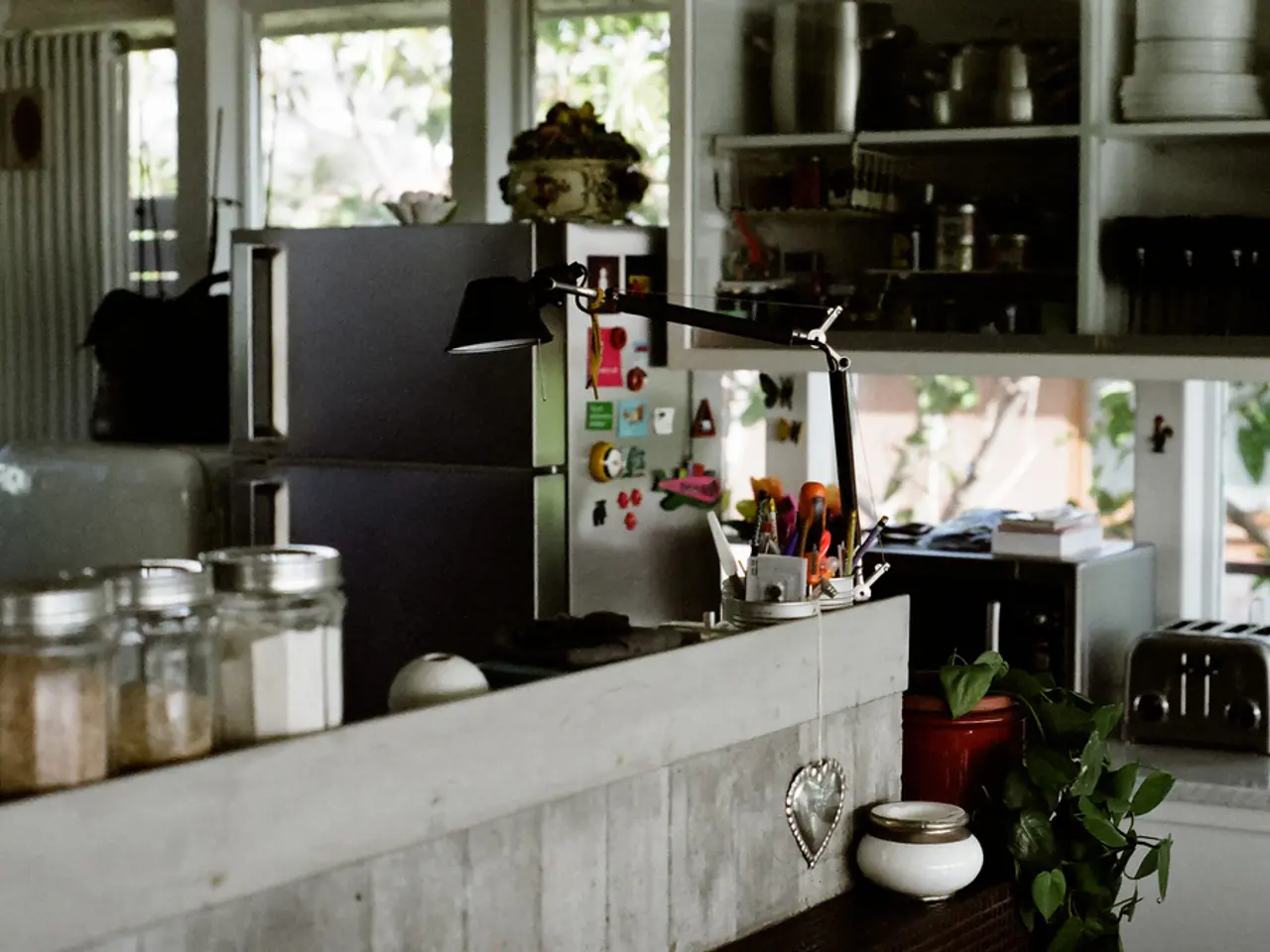Strategies for Successful Home Cultivation of Herbs
Indoor herb gardens are a fantastic way to bring the aroma and flavour of fresh herbs into your home. Here's a guide to help you create an effective and thriving organic herb garden.
Soil Preparation
Begin by testing your soil's pH and texture to understand its condition. Amend the soil with organic matter such as compost, aged manure, or worm castings to enhance nutrient content and microbial activity. Avoid excessive tilling to preserve soil structure. Raised beds are beneficial for better soil control, drainage, and ease of maintenance, especially for beginners.
Soil pH Levels
Most herbs thrive in slightly acidic to neutral soil, with a pH between 6.0 and 7.0. Testing your soil pH helps determine if adjustment is necessary to create a favorable environment for herb growth.
Choosing the Right Soil Mix
A good soil mix for indoor herb gardens should have good drainage and be rich in nutrients. A common blend is 2 parts potting soil, 1 part compost, and 1 part perlite or vermiculite. This mix provides the right balance of aeration, water retention, and nutrients.
Watering Techniques
The soak and dry method is recommended for watering indoor herbs. Water deeply but less frequently to promote strong root growth, and mulch with organic materials like straw or shredded leaves to retain moisture and suppress weeds.
Fertilizing
Diluted liquid fertilizer should be used every few weeks for indoor herb gardens. Organic fertilizers like fish emulsion or seaweed extract can boost herb growth.
Planting and Transplanting
Sow seeds indoors about 6 to 8 weeks before the last expected frost. Use loose, moist soil and plant seeds no deeper than twice their size. Once seedlings appear, reduce soil moisture to avoid fungal problems. Transplant seedlings into larger containers as roots grow, and harden them off outdoors on warm days before moving them permanently outside after soil temperatures stabilize above 60°F at night.
Pot Selection and Plant Size
Basil, parsley, and cilantro are best grown in 6-8 inch pots, while cilantro requires an 8-10 inch pot. Choose pots with drainage holes to prevent waterlogging.
Light Requirements
Basil, mint, parsley, and cilantro are easy to grow indoors and thrive with at least 6 hours of sunlight daily. A sunny windowsill is an ideal location for an indoor herb garden.
Pest Management
Pests should be watched for and washed off with water if found.
Pruning
Regular pruning helps indoor herbs grow bushier.
Starting with the Right Herbs
The right herbs to start with for indoor herb gardening include basil, chives, or mint.
By focusing on soil health, appropriate pH levels, and careful seed starting and transplanting indoors, you can ensure strong plant development and a thriving organic herb garden. Happy gardening!
[1] https://www.gardeningknowhow.com/edible/herbs/general/indoor-herb-gardening.htm [2] https://www.almanac.com/plant/herb-gardening [3] https://www.gardeningknowhow.com/garden-how-to/soil-fertilizers/how-to-improve-soil-structure.htm [4] https://www.gardeningknowhow.com/garden-how-to/soil-fertilizers/how-to-test-soil-ph.htm
- A good soil mix for your indoor herb garden, rich in nutrients and with excellent drainage, can be created by combining 2 parts potting soil, 1 part compost, and 1 part perlite or vermiculite.
- Basil, parsley, and cilantro are among the ideal herbs to start with for an indoor herb garden, and they are best grown in 6-8 inch pots for basil and parsley, or 8-10 inch pots for cilantro.
- To create a thriving organic herb garden, focus on maintaining the soil's health, choosing a soil mix with appropriate pH levels, and proper seed starting and transplanting indoors.
- Proper watering techniques for indoor herbs involve using the soak and dry method to water deeply but less frequently, retaining moisture with mulch and promoting strong root growth.




